|
|
By Jo Nova
The Government is not afraid of misinformation, they are afraid you will speak the Truth
Add your submission by August 20th
Misinformation is easy to correct when you own a billion dollar news agency, most academics, institutions, expert committees and 25% of the economy. The really hard thing, even with all that power and money is to defend an absurd lie and stop people pointing it out. Like for example if you want to spend a trillion dollars of taxpayer money using power stations, cars and steak sandwiches to change the global weather. For that, you need the Ministry of Truth to force the falsity on the serfs.
The best way to deal with misinformation is to speak better information.
Let the court of public opinion decide. There is something profoundly arrogant about the assumption that 26 million brains are too stupid to figure out the truth when left to their collective free debate.
The proposed Australian Communications and Media Authority (ACMA) misinformation bill is truly the draft that Mao or the Politburo would have admired. Effectively if you are government “approved” (institutional, academic or official news) you are free to say whatever you like, but if you are the untermenschen, you are not — even if you ultimately speak the truth.
Digital media platforms will need to self-censor the vague and unknowable comments that may be misleading and may cause harm or they face monster fines like $6m or 5% of revenue (which for Twitter is something like $150m). The mushy, ill-defined and open nature of this is exactly the point. Which publisher will be able to afford to hire the QC lawyers and run test-trials to figure out in advance if a comment breaches the code? It’s so much easier just to take the safer option and shhh, skip those provocative thoughts.
By David Coleman, Opposition communications spokesman. The Australian
Misinformation is defined very broadly. It is information that is “false, misleading or deceptive” and is “reasonably likely” to “cause or contribute to serious harm”. The bill then uses an extremely wide definition of harm, which includes things such as harm to the environment, harm to the economy or a section of the economy, or “disruption of public order or society in Australia”.
The Government IS “the truth”:
The bill is very poorly constructed and includes many obvious red flags. Under Labor’s bill, if the government says something, then it is not misinformation. Authorised content from any level of government cannot be misinformation. That same protection does not apply to non-government parties or ordinary Australians commenting on political matters. This is indefensible.
Academics are exempt because there’s no need to control them with ACMA, they can be sacked, intimidated, or defunded already anyhow (see Peter Ridd):
Statements made by academics are exempt, but not statements made by non-academics on exactly the same topics. So an outsider with an unfashionable view could find their contribution has been deleted as misinformation. Given the seismic contributions of unfashionable outsiders throughout history, this shows an extraordinary lack of wisdom.
Statements made as part of “professional news content” are exempt, but those statements are not exempt in other contexts. So if a journalist made a comment on their personal Facebook page, or appeared on an independent podcast, their statements could be misinformation. And if a statement made in “professional news content” is repeated outside of that environment, it would not be exempt from the law.
So if you thought you could quote Professor Peter Ridd on the replication crisis in science, or fabricated photos in reef research, think again. You may be harming the Spotted Left Wing Parrot fish.
If a Prime Minister were to say they were “the single source of truth”, say, it could be published once in a newspaper but if the punters were to repeat it ad nauseum mockingly on social media, in strictly accurate quotes, that might become misinformation? I mean, the repetition might harm the children’s sense of civic duty, after all? I don’t know, but that’s the point of the spaghetti mess in legalese. Try reading it. You are not supposed to know.

You can say anything you want from under the boot…
These apply to all Australians, not just publishers!
ACMA’S coercive powers under the bill are very concerning. Those powers apply not only to digital platforms but to all Australians. ACMA may pursue any person if it believes they have information about “misinformation or disinformation on a digital service” and that it requires the information to perform its functions. ACMA can force the person to appear before it to answer questions about misinformation or disinformation.
Journalists in professional news organizations are exempt, but not citizen journalists
Hypothetically, if any systematic corruption or intimidation (or delusional fashion) were to sweep through our main media outlets (like the idea of chopping healthy body parts off teenagers), an outsider media platform would be the one to point that out, yet they would be subject to “misinformation” codes and draconian fines.
Satire is excluded, but what if the government doesn’t find it funny?
Who decides what satire is? Whoever they are, they be the King of Conversations online in Australia:
The bill excludes statements made in good faith for the purposes of entertainment, parody or satire. But it does not exclude statements made in good faith for the purpose of political debate. So a comedian commenting on politics would be protected from having their content removed, but a non-satirical citizen offering their honest views on political matters would not be protected.
Blog Comments not allowed?
If these laws came into being, would this blog have to close all comments? Would this blog even exist?
James Hol on The Liberty Itch
… many are under the mistaken assumption that this will only apply to social media giants. In fact, it will apply to every single website that provides “news content” and has an “interactive feature”.
If you think you can avoid the Ministry of Truth by simply starting your own social media platform or providing content on your own website, you’d be advised to have no interest in a comments section or posting video content, otherwise that website will also be captured by these draconian laws. Indeed, this Liberty Itch masthead will be at threat of fines in the millions of dollars should this Bill become law.
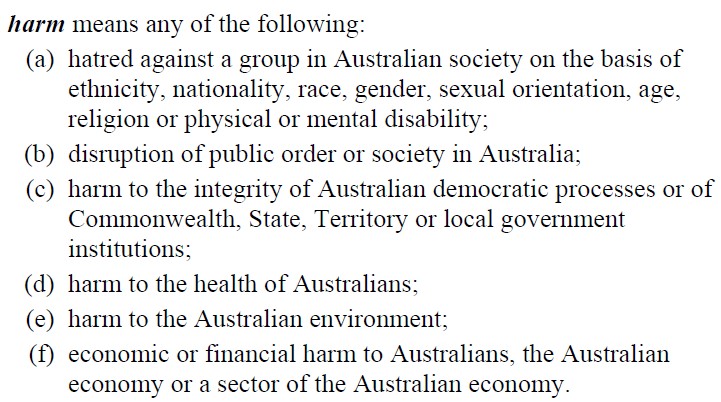
While the Bill gives lip service to our constitutionally implied freedom of political communication, it attempts to circumvent it by creating a fascistic partnership between ACMA and private entities. Instead of ACMA enforcing speech, it makes digital service providers do its dirty work – at threat of significant fines.
However, ACMA can impose industry-wide standards and codes if digital service providers go rogue and dishonour their fascistic agreements. Hoping for a safe haven at Elon Musk’s Twitter (now called X), might be more pipe dream than reality.
Would I have to register as a news outlet, set up my own university, or revert to permanent satire or salad-coded language (did you take your booster carrot today?).
It appears this bill is designed to capture all the online free speech that is not already controlled by Big Government or Big Money. The new Printing Press arrived to give a voice to the People, and it must be stopped.
Please send in those submissions!
As David Maddison, Penguinite, MP, Andrew McRae, Konrad and others suggest:
Don’t forget to put your submissions in opposing the latest proposed Australian Government censorship legislation.
“New ACMA powers to combat misinformation and disinformation”.
They don’t have to be long. But it closes on August 20th.
Read Konrad’s submission here.
The bill, the Communications Legislation Amendment (Combating Misinformation and Disinformation) Act 2023.
9.9 out of 10 based on 118 ratings
8.5 out of 10 based on 12 ratings
By Jo Nova
Any which way you look at global drought measures in the last 120 years this is not the CO2 doom scenario of the IPCC prophesies either in rainfall patterns or in water supplies. The graphs below show rainfall trends shifting slightly due to unknown forces and looking for all the world, like CO2 is irrelevant. Despite the scare campaigns about floods and droughts, and the threats of climate wars over dwindling rivers, there has been no trend in hydrological droughts since the Wright Brothers first flew a plane.
Kenneth Richards at NoTricksZone reported on Shi et al, a paper which looked at trends from 1902 to 2014 in all nine climate zones of the world.
The first graph shows a mixed bag of trends in Meteorological Droughts, none of which are obviously linked to human emissions of CO2. Remember, half of all human emissions since we crawled out of caves has been emitted after 1995. According to CDIAC fully 250,000 Mt of CO2 was emitted up to that year, then we have doubled that in the years since then. If CO2 was a planet transforming molecule, surely we’d see something in the last 25 years?
The bottom line is that if we had climate models with any understanding of rainfall they would be able to predict wet and dry seasons, and trends in droughts, floods, streamflow, and rivers. Instead, like stone-age heathen victims, we wail and lament any time a flood or a drought happens anywhere. We blame camels or cows, trucks and planes. We change our light globes and hope our houses don’t get washed away on the same floodplains that were inundated 100 years ago.
The first graphs show Meteorological Droughts trends in the nine climate regions (a lack of rain):
The regions codes are on the map below. (Click to enlarge).
The second set of graphs are the hydrological drought trends (a lack of water supply):
These are the climate zones the study used:
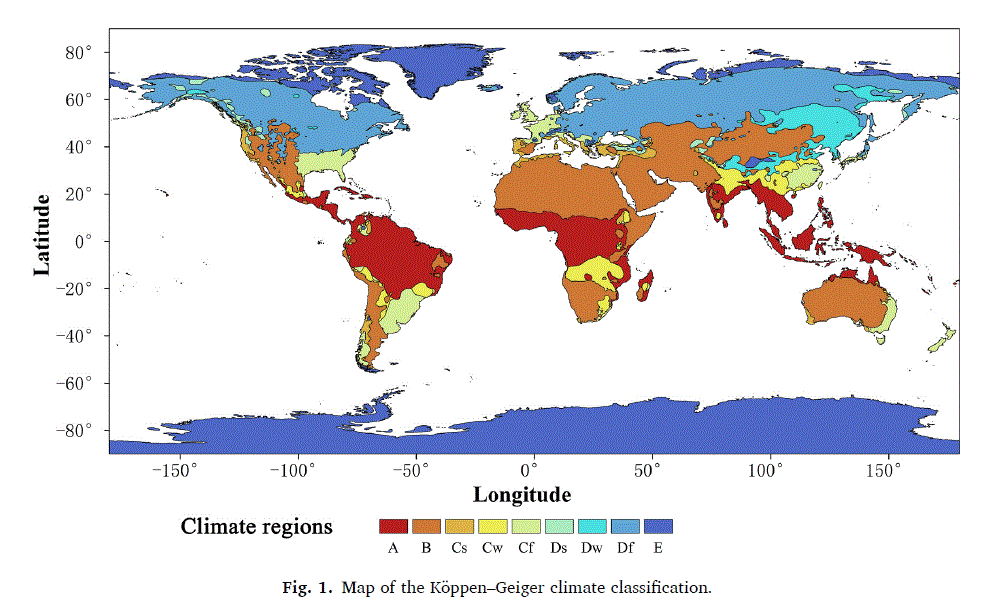 Classification of different drought regions of the world. Shi et al 2023 (Essentially Australia is B, Cf and A, The USA is B, Cf and Df. The UK, France, Germany and NZ are Cf).
Even longer studies show that droughts and floods have always happened
Fully 178 years of Australian rainfall showing no trend at all in relation to CO2. A study on one thousand years of rainfall in Antarctica suggests droughts and floods used to be longer, worse. Indeed, old world megadroughts in past 2000 years worse, longer, than current droughts. The deadliest droughts in India were before 1924…. etc.
For more posts on these see the tags: Rain , Drought, Floods, Australian rainfall
DEFINITIONS
According to NOAA, a Meteorological Drought is a lack of rain suffered for an extended time, whereas a Hydrological Drought is a lack of water supply such as stream flow, reservoir and lake levels, and ground water.
REFERENCE
Haiyun Shi et al (2023) A global perspective on propagation from meteorological drought to hydrological drought during 1902–2014, Atmospheric Research
Volume 280, 15 December 2022, 106441, https://doi.org/10.1016/j.atmosres.2022.106441
Image by Anja from Pixabay
10 out of 10 based on 78 ratings
As David Maddison, Penguinite, MP, Andrew McRae, Konrad and others suggest:
Don’t forget to put your submissions in opposing the latest proposed Australian Government censorship legislation.
“New ACMA powers to combat misinformation and disinformation”.
They don’t have to be long. But it closes on August 20th.
Read Konrad’s submission here.
9.9 out of 10 based on 14 ratings
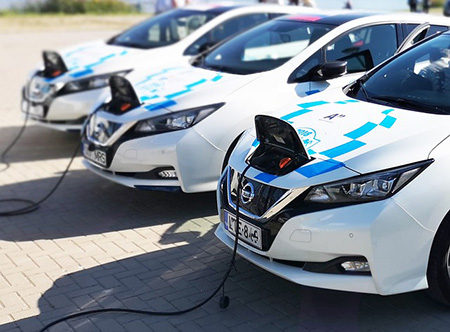
By Jo Nova
The plan: The hapless homeowners will buy the back up battery for the grid and install it in their garage. Sometimes they might drive it too.
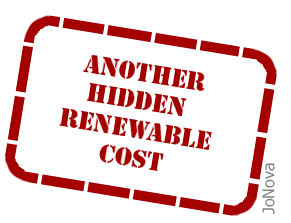 Instead of solar and wind investors paying for the storage they need to produce useful reliable electricity, the plan, apparently, is to force the people to buy electric cars then use their batteries to save the grid instead. When someone plugs their car in to charge, the grid or their house might draw electricity out instead. It’s called two-way-charging, bi-directional charging, Vehicle-to-Grid (V2G) or Vehicle-to-Home. Instead of solar and wind investors paying for the storage they need to produce useful reliable electricity, the plan, apparently, is to force the people to buy electric cars then use their batteries to save the grid instead. When someone plugs their car in to charge, the grid or their house might draw electricity out instead. It’s called two-way-charging, bi-directional charging, Vehicle-to-Grid (V2G) or Vehicle-to-Home.
There are moves to make this happen in California, Australia and Europe. There have already been 170 trials around the world costing millions of dollars to try to figure out how to do this. Clearly it’s a big agenda.
Repeated charges and discharges must shorten the life of the battery, and possibly inconvenience car owners too if they get caught without the fuel in the tank. What if there is family emergency at 11pm? (Well, you can catch a cab.) As well as this, every EV added to the grid is like adding “3 to 20 new houses“. Energy losses with batteries are around 20% and worse as the battery ages.
Despite the downsides, network managers are excited at the thought of using the collected mass of EV batteries to stabilize the grid, and it’s being sold as “a great way to reduce your power bills”.
Jennifer Dudley-Nicholson, The Driven
A report from the Australian Renewable Energy Agency (ARENA) says the technology could become the nation’s biggest electricity storage opportunity in the next decade and has the potential to save consumers more than $6000 on the lifetime cost of charging an electric car.
“Electric vehicles offer massive, untapped storage potential,” she says.
“In 10 years, Australia’s electric car fleet is likely to have more battery capacity than Snowy 2.0 – that’s a whole lot of storage on wheels that is parked about 95 per cent of the time.”
A bill has been introduced in California to require all EV’s to have “Bi-directional” charging by 2027. GM just announced it will be standard on one of the EV series by 2026. Tesla plans to have bidirectional charging by 2025, though Elon Musk is unimpressed and says it’s ‘inconvenient‘. South Australia is already running a trial where private electric-car owners can send their battery’s energy back into their own homes.
Savings are listed “per decade” — it’s that bad:
The greatest savings could be unlocked by drivers in South Australia and NSW, the report found, while those in Queensland and the ACT could access smaller discounts of more than $1000 over a decade.
So that’s a big $100 a year discount for people in Queensland or the ACT for the more rapid devaluation of an asset that costs $60,000 to $100,000? It may shorten the life of the car by a year or two, and increase the risk of house fires, but otherwise it’s a “great idea”.
This partly explains the push for mass forced uptake of EV’s — they are the big band-aid for unreliable renewable-grids. It’s obviously not about “saving us from climate change” because no one is even sure if EV’s will reduce emissions (and the emissions are beneficial anyway). What EV’s will enable (apart from tracking, spying, sabotage and remote control) is more stability on fragile grids burdened with too many wind and solar plants. But how does this make any sense when grids need to add generation to charge the EV’s?
The Australian ARENA Report admits it isn’t cost effective even at the high prices of last year:
The REVS trial used 51 Nissan Leaf cars in Canberra to examine the cost effectiveness of using car batteries to improve grid “energy stability”. But they concluded it wasn’t worth it yet, which was a shame because the trial itself cost $2.7 million.
“Today, V2G has challenging economics. But in some niche use cases, where vehicles are plugged in for extended periods, V2G could soon be economic. In most cases charger prices still need to drop before V2G is economic.”
Of course, if the corrupt management of the grid makes electricity prices expensive enough, sooner or later it will “make sense” to use your car as a grid stabilizer to save a few dollars. They just need to screw up the market some more to make EV-dis-charging “appealing”.
As Stephen Green said imagine the government wanted to siphon your gas tank?
You go to the gas station to top off your tank for a long road trip. Unbeknownst to you, the gas station is actually a little low on gas because the manager forgot to call Shell HQ and order a tanker truck for a refill. When you stick the gas pump in the side of your car, the intelligent pump notices that you’ve actually got more than half a tank. So instead of pumping gas into your car, the gas station siphons a gallon out of it. Just to stabilize the station’s supply, don’t you know?
Depending on how much control householders have of their “smart” charger, and how aggressive governments are with “incentives” it’s a fair question to ask, “who owns the battery”? Like rooftop solar panels and air conditioners controlled by government agencies, more of what we thought we owned is really just rented from “the State”.
You will own nothing…
EV charging image by Nerijus jakimavičius
10 out of 10 based on 108 ratings
9.1 out of 10 based on 11 ratings
7.9 out of 10 based on 26 ratings
8.2 out of 10 based on 25 ratings
By Jo Nova
We need to know: Can We Stop Volcanoes with Solar Panels?
Quick set up a summit. Give me a grant. Climate Change causes more rain (except when it causes more drought), and apparently the weight of “up to” four meters of monsoon rainfall can compress a crustal plate leading to earthquakes.
Now, four meters of rain means a lot to a pitiful 1.8 meter homo sapiens, but it’s hard to believe a plate of rock 30 kilometers thick would care less or even notice. It’s all absurd.
The whole article, written by a “Reader in Physical Geography” at Coventry Uni makes out the climate change is all around us, but unwittingly depends on the idea that the Sun is just a big torch shining on Earth, and not a raging nuclear magnetic dynamo 300,000 times bigger than the planet, blasting us with charged particles at a million miles an hour and with a magnetic field that stretches past Pluto. Poor Dr Blackett with his 20 years of university education was never taught about the Sun. He has a pretty graph pointing out some correlation between earthquakes and monsoons but doesn’t once ask if The Sun might be causing both. What’s more likely, that changes in the solar magnetic field destabilize tectonic plates or your SUV does?
And we don’t even need to guess, it’s already very well established that solar cycles are linked to rainfall, jetstreams, floods, and groundwater, even unpaid bloggers know this. If only universities had not devolved into propaganda houses where people can write abject drivel and there’s not a single well trained person left to point it out. It’s cruel, except he’s paid well to write this.
He probably thinks he’s being provocative, but he’s just proving what a wasteland Big Government Science is:
Matthew Blackett, The Conversation
A warmer atmosphere can retain more water vapour, subsequently leading to higher levels of precipitation.
Interestingly, geologists have long identified a relationship between rainfall rates and seismic activity. In the Himalayas, for example, the frequency of earthquakes is influenced by the annual rainfall cycle of the summer monsoon season. Research reveals that 48% of Himalayan earthquakes strike during the drier pre-monsoon months of March, April and May, while just 16% occur in the monsoon season.
During the summer monsoon season, the weight of up to 4 metres of rainfall compresses the crust both vertically and horizontally, stabilising it. When this water disappears in the winter, the effective “rebound” destabilises the region and increases the number of earthquakes that occur.
It’s like reading tea-leaves:
He’s worried that climate change might melt glaciers and cause decompression melting to occur in the mantle leading to volcanoes. But he’s reassured “phew” because there was a lag of several hundred years…
It’s a cult.
Read the few comments left at The Conversion site where people like us are theoretically banned.
“We are truly too late to do anything that will prevent this disaster.”
9.9 out of 10 based on 107 ratings
9.4 out of 10 based on 18 ratings
By Jo Nova
A second big Australian “Pumped Hydro” scheme is crashing on economic rocks…
 The Marinus Link cable was meant to spark a glorious renewables boom and make Tasmania “The Battery of the Nation”, instead it will cost more than a new advanced coal fired plant, provide no energy at all, and currently even the thought of it is causing chaos. New projects are on hold, factories can’t expand and Tasmania is held hostage to visions of an electricity grid designed to stop storms instead of generate energy. The Marinus Link cable was meant to spark a glorious renewables boom and make Tasmania “The Battery of the Nation”, instead it will cost more than a new advanced coal fired plant, provide no energy at all, and currently even the thought of it is causing chaos. New projects are on hold, factories can’t expand and Tasmania is held hostage to visions of an electricity grid designed to stop storms instead of generate energy.
The Marinus Link is a 255km cable that was supposed to be the second interconnector from Tasmania to the mainland. In theory it would cost $3 billion and carry 1.5GW of electricity. But the costs have blown out to $5.5 billion and the State Premier is balking at the new bill.
However, most of the new wind power projects in the state are awaiting the magic cable before they commit — without it, they can’t reach the real market, which is mainland Australia. But without them, the local grid doesn’t have enough surplus capacity to cover the lean times (or rather, without the cable, they can’t get access to more reliable brown coal power in Victoria).
The brutal truth is that wind power is only “cheap” (or even barely economic) if the poor taxpayer serfs pay for the five thousand million dollar cable (and the storage). If Tasmania built another reliable power plant instead, it wouldn’t need the inter-connector at all. The cables look, smell and cost like public infrastructure, but are just another hidden cost of “renewables”.
The foiled plan and uncertainty means Tasmania is in a quiet energy crisis.
Even without being built, “the cable” is causing chaos
As reported in The Australian, Tasmanian businesses can’t get energy to expand. One paper mill that runs on coal-fired boilers wants to replace them with electricity but can’t. In a state with “100% renewable energy” you’d think the state electricity corporation would be beating a path to their door. Instead Hydro Tasmania said it can’t spare 50MW of despatchable power and told the company it needs to arrange equivalent power from wind and solar generators. But the paper mill is struggling, and says it would involve “substantially higher operating costs”. Funny how the free energy always costs more?
Industry, jobs on hold as Tasmania ‘runs out of power’ and Marinus Link stalls
Matthew Denholm, The Australian
Tasmanian Chamber of Commerce and Industry chief executive Michael Bailey said the state was in “another energy crisis”.
We have businesses asking the government for more power to expand and create more jobs, yet today we’ve heard that the government is turning them away because we simply do not have enough generation to meet demand,” Mr Bailey said. “If that’s not the definition of a crisis, then what is? Even the Economic Regulator has said … there is no ‘head room’ in the Tasmanian grid, which confirms the business community’s worst fears.
In the glory days of 2018 as dreamed up by Malcolm Turnbull, the second cable was originally estimated to cost $1.1 billion, and the full 5GW “Battery” of pumped hydro in Tasmania would be twice the size of Snowy 2.0 (which is currently also stalled in its own cost blowout and trapped tunnel borer).
Some Greens want to Sink the Link too
Environmentally the idea is so bad even Bob Brown and Christine Milne, former Greens leaders, have launched a “Sink the Link” campaign to stop the cable for environmental reasons. They can see now that it will unleash a wave of industrial development that will consume the wilderness.
Are these older Greens finally realizing they were tools of property developers and big industry all along? They campaigned for years for exactly this future. Now they want to stop this train?
“No one in Tasmania’s south appreciates the sell-out and industrialisation of the north that is being proposed to line the pockets of private developers and feed power to the mainland. The magnificent Robbins Island, takayna, Stanley, and forests and farmlands from Circular Head to Eddystone Point and the Central Plateau are all in the firing line. It is time that people had access to information about what is happening on the ground,” Bob Brown Foundation takayna Campaigner Scott Jordan said.
–Bob Brown Foundation
This is the state that approved a Mega Wind farm that won’t be able to operate for five months of the year lest it hurt the Orange-bellied Parrot. That’s the Robbins Island Mega wind farm: killing birds and baseload power at 300 kilometers per hour. Presumably construction of the largest wind farm in the Southern Hemisphere is also waiting for the big cable…
See also The Tasmanian Times
9.8 out of 10 based on 112 ratings
8.9 out of 10 based on 14 ratings
By Jo Nova
Whatever you do, don’t let the punters know the corals aren’t collapsing.
 Wise Hok Wai Lum Last year, the Great Barrier Reef had blockbuster levels of coral cover, and this year it’s the same, even though global carbon dioxide levels rose 1%, and China probably installed another 100 coal fired plants. The corals, apparently, don’t care.
The Australian Institute of Marine Science (AIMS) issued a press release, calling this repeat record a “pause”.
“A pause in recent coral recovery across most of the Great Barrier Reef” — AIMS
Last year only 3% of Australians knew the Great Barrier Reef was in record good health, and AIMS seemingly wants to keep it that way.
If this survey showed the reef was in record poor cover for a second year, would they call it a pause in recent damage? The lies-by-omission are still lies. AIMS is deceiving the taxpayers who pay for AIMS.
It’s a disaster, again. How will scientists get research grants to manage a reef that looks after itself?
Peter Ridd is scathing:
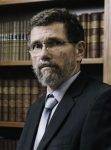 “The fabulous condition of the reef demonstrates that the public has been systematically misled by many science institutions about the condition of the reef,” Dr Ridd said. “The fabulous condition of the reef demonstrates that the public has been systematically misled by many science institutions about the condition of the reef,” Dr Ridd said.
The Australian
The reef now has twice as much coral as in 2012 when it hit a low point after being smashed by major cyclones.
Last year’s record-breaking result was also embarrassing to the GBR science institutions. They had proclaimed that the reef had just been devastated by four unprecedented hot water bleaching events in 2016, 2017, 2020 and 2022 – but then it had more coral than ever. …
Ridd says it’s time to audit the science institutions:
The truth is we have been scammed for decades, and the perpetrators have been caught out. Once-trusted science institutions have become untrustworthy. It is time they are subjected to serious scrutiny. Have they become ideological? Are they inclined to groupthink? Are they motivated by the funding imperative, which relies on the reef being perpetually doomed? How do they handle dissenters – are they ostracised or welcomed? What are their quality assurance systems that clearly failed? How did they get this so wrong for 60 years?
Within a few years there will be a big cyclone, which is now known to be by far the biggest coral killer, or another plague of crown of thorns starfish, both of which are entirely natural. The amount of coral will reduce. Doubtless the headlines will say we have lost half the coral on the reef, as they have proclaimed many times in the past – occasionally truthfully. The science institutions will be happy. The money will keep flowing. The children will remain depressed. More costly red-tape will be imposed on farmers to “save the reef”, and the reef-tourism industry gets kicked in the teeth again by the bad publicity.
—The Australian
It’s time to audit the media too. The junk science news produced by junk institutions should be mocked by an independent media, not repeated parrot style. Something is very wrong with the media landscape…
UPDATE: Thanks to Peter Ridd for this graph
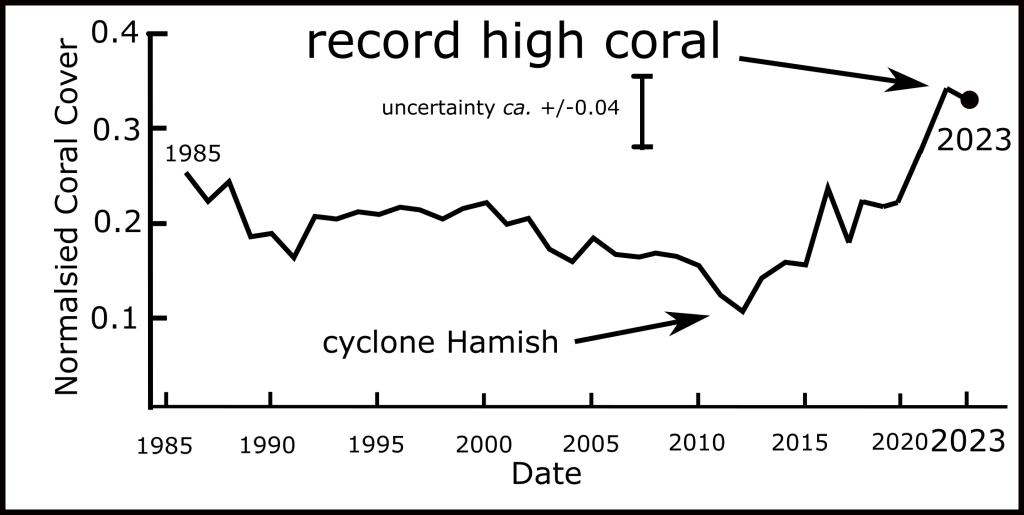 After 37 years of non-stop pollution, there are more corals than ever growing on the Great Barrier Reef.
9.9 out of 10 based on 127 ratings
8.7 out of 10 based on 18 ratings
By Jo Nova
The end of the naive era of hope in Wind Power fairies
Remember how they said wind energy would keep getting cheaper? Only a year ago academics were still writing papers about the “Moore’s Law” miraculous future of wind power. Only we appear to have already hit the point where bigger is not better. Two years ago the former head of Siemens bizarrely warned that “Wind power risks becoming too cheap” and Reuters, bizarrely, published it.
Meanwhile production costs are rising for the offshore variety too, and Siemens is scrambling to delay deliveries, so it can fix problems first…
The Washington Post, a big fan of the “Green transition”, puts in an admirable effort to make excuses for the bad luck of the wind industry — anything but admit that this failure may represent real mechanical limits to the collection of erratic, low density energy in the most hostile settings on Earth.
These machines are so fragile they cannot just sit under their own weight motionless, less they get permanent brinelling damage to the bearings. And tiny micro-oscillations can create False Brinelling.
Wind ‘Turbinegeddon’ Is a Troubling Climate Omen
by Chris Bryant, The Washington Post
…the Siemens Gamesa wind business moved too fast and has now discovered abnormal vibrations arising from blades and bearings which may have to be replaced.
While the affected models represent only 4% of its installed fleet, the direct costs of the fix are estimated at €1.6 billion. The company faces further unexpected expenses related to ramping up production of offshore turbines, as well as unfavorable tax effects. Bernstein Research analyst Nicholas Green has evocatively dubbed the moment Turbinegeddon.
Shares fell dramatically six weeks ago when the problems were first announced and after more information, and a long hard think — have not recovered at all.
Oh Woe is the Wind Industry
It’s so unfair that people don’t like bird-bashing giants and thumping infrasound. And who could have seen that spending trillions turning our electricity grid into a giant weather changing machine would make energy costs higher, thus piling wood on the inflationary fires that have come back to bite wind turbine manufacturers?
The wind industry should be flying high but instead is entrapped by a cornucopia of troubles. Projects are too often held up by red tape and nimbyism, while contracts signed years ago have become onerous due to material and logistics cost inflation. Chinese companies that dominate their home market are looking increasingly to expand overseas, pressuring pricing.
Imagine tying one arm behind your back while competing with a nation powered with cheap coal and slave labor?
h/t Colin
9.9 out of 10 based on 119 ratings
9.4 out of 10 based on 13 ratings
By Jo Nova
Imagine giving an enemy the ability to track your VIPs movements and listen to their conversations in the car? Adversaries could learn national secrets, play mayhem on the markets with insider tips or just figure out who was having an affair with a view to blackmail and extortion. Worse, what if your adversaries could electronically upload software to your vehicles and shut down even 1 car in 100 on the major national highways — bringing the road network to a grinding halt?
Where is James Bond when you need him? This would have been a great script.
Thanks to NetZeroWatch:
Michael Curzon, European Conservative
A new report warns of a major impending security risk in handing Beijing the power to immobilise thousands of cars owned by Britons—and many others across Europe. Professor Jim Saker of the Institute of the Motor Industry, quoted in The Times, said “the threat of connected electric vehicles flooding the country could be the most effective Trojan horse that the Chinese establishment has.” There would, he added, be no way to prevent Chinese state-owned manufacturers from including technology in cars set to be exported which could bring them all to a halt.
This comes just months after reports of a Chinese tracking device being found in a UK government vehicle.
Even better, to make the national suicide voluntary and complete, the CCP probably wouldn’t even need to do anything so brazen as paralyzing the car fleet. China has just taken the top spot as global car exporter. Cars shipped grew by, wow, 76% for the year. One quarter of those cars are EV’s and they are €10,000 (£8,600) cheaper than the cars made in Europe, Japan and America.
 As long as the West forces EV’s on its own population, and then taxes them to subsidize all the charging stations and extra generation required, the put-upon and suffering customers will choose the cheapest car they can find. As long as the West forces EV’s on its own population, and then taxes them to subsidize all the charging stations and extra generation required, the put-upon and suffering customers will choose the cheapest car they can find.
And without cheap electricity from coal or slave labor in the factories, how could the Western car industry ever compete?
The CCP plugged in $100 billion in subsidies to get the EV industry up and running. They “pressured foreign firms into forming joint ventures with Chinese counterparts ” and learnt their trade secrets.
Of course, that’s a big punt for China. If the West decided to let the free market rule instead of forcing EV’s on everyone, then China will have cornered a market in nothing much. President Xi, presumably will be keen for Westerners to stay in the thrall of pagan weather-control via lithium batteries.
The alarming reality of cheap Chinese cars on British roads
ByMatt Oliver ; Howard Mustoe and Will Hazell, The Telegraph
Sources who spoke on condition of anonymity said these trials – which revealed “gaping holes” in security – were carried out at the request of sceptical car manufacturers who refused to believe such hacks were possible until they were demonstrated in front of them.
It’s just a software update…
Modern cars are increasingly dependent on “over the air” software updates, which they receive through a mobile phone-style SIM card that is built into the vehicle.
If a malicious actor gained access to these update systems, through servers known as “the backend”, they could beam out software that allows them to spy on vehicles and their driver remotely.
It’s already here:
This is the case for all new cars, wherever they are made in China, Europe or the US. A SIM card allows the car to receive updates, new features and security patches, just like a smartphone. In a crash a car will phone the emergency services. To do this, it needs a microphone and a link to the outside world. Cameras inside make sure you are not nodding off at the wheel.
All of this can be used to spy on you if security is lax, says Ken Munro, a security expert and ethical hacker at Pen Test Partners, a company that tests for security holes.
“We did a bunch of work on aftermarket car alarms. And we discovered that in many of them, you could actually remotely enable the microphones and listen to people in the cars.”
The Telegraph has a long feature on this, read it here.
Chinese Statue Photo by Serg Balak
9.8 out of 10 based on 98 ratings
9.5 out of 10 based on 16 ratings
By Jo Nova
The man is a soldier — Ian Plimer has put out three new books at once, written in three different styles at three different levels.

Volume 1 is written for primary school children and uses body functions such as food and farts to show the carbon cycle and demonstrates that net zero and carbon neutral are impossible. Volume 2 is for secondary school children and deals with the basics of climate change, renewable energy and EVs in a humourous, irreverent, slightly seditious and entertaining style whereas Volume 3 for post-secondary school children deals with the history of the planet’s climate changes and how climate policy will have a profound negative effect on their generation.
The book is aimed at parents and grandparents all over the world who might want to deprogram children from the barrage of propaganda that children are exposed to at school, in the mainstream media and on social media.
Order through Connor Court
9.8 out of 10 based on 80 ratings
By Jo Nova
It’s like a light has switched on in UK politics
Who would have guessed that voters like their gas guzzling cars? Well everyone would, of course. Which is why it defies explanation that both sides of politics ignored this for so long. But a phase change is underway…
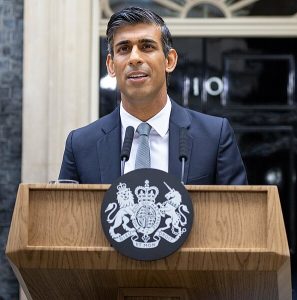 After the Uxbridge by-election surprise, Rishi Sunak suddenly talked about being pragmatic on the road to Net Zero and said he would “Max Out” the North Sea Oil reserves. He vowed to review the “low traffic neighborhoods” (the bossy bollard program) and said he was on the side of the motorists. Since then he’s apparently leapt from -2.7 in net satisfaction polls among Tory members to +20.7, a leap of 23%. After the Uxbridge by-election surprise, Rishi Sunak suddenly talked about being pragmatic on the road to Net Zero and said he would “Max Out” the North Sea Oil reserves. He vowed to review the “low traffic neighborhoods” (the bossy bollard program) and said he was on the side of the motorists. Since then he’s apparently leapt from -2.7 in net satisfaction polls among Tory members to +20.7, a leap of 23%.
Thanks to NetZeroWatch for keeping us informed:
Jack Maidment, The Telegraph
Last month, Mr Sunak’s popularity among the Tory grassroots sunk to its lowest level since he took over at No 10. He received a net satisfaction rating of -2.7 – …But the premier has bounced back in the latest survey of party members, with a score of 20.7 …
A separate ConservativeHome survey of Tory members published earlier this week showed the political importance of net zero for the Prime Minister.
How strong is that message? Four out of five conservatives like their petrol cars:
It revealed that an overwhelming majority – 83 per cent – believed the Government was wrong to ban the sale of new petrol and diesel cars from 2030. Mr Sunak has insisted that the policy will go ahead as planned.
The Sun editorial even says: “If Rishi Sunak put brakes on net zero, it could see him back on the road to election victory.
To put that in perspective, in late July polls in the UK put the Conservatives at 28% and Labor at 45% so to even talk of winning shows how the landscape is shifting.
By ESTHER MCVEY
I can’t be the only one enjoying the screeching U-turns politicians are making over Net Zero. Many of us have been raising the alarm over its timetable and estimated trillion-pound plus cost for a while, and so we welcome those who are belatedly seeing the light.
It’s happening in many countries:
Germany woke up first, seeing the devastation it would cause to their motor industry, and they are now desperately trying to kill-off the EU ban on conventional cars.
Macron is now asking Brussels for a “pause” in its investment-deterring green regulations and, Sweden – the country that led the way to enshrining net zero into law back in 2017, and gave the world Greta Thunberg – has quietly abandoned its pledge to be 100 percent renewable by 2045.
We hope politicians in Canada, Australia and New Zealand are watching this phase change. This post is for all them.
Photo Prime Minister Rishi Sunak by Lauren Hurley / No 10 Downing Street
9.9 out of 10 based on 89 ratings
|
JoNova A science presenter, writer, speaker & former TV host; author of The Skeptic's Handbook (over 200,000 copies distributed & available in 15 languages).

Jo appreciates your support to help her keep doing what she does. This blog is funded by donations. Thanks!


 Follow Jo's Tweets
Follow Jo's Tweets To report "lost" comments or defamatory and offensive remarks, email the moderators at: support.jonova AT proton.me
Statistics
The nerds have the numbers on precious metals investments on the ASX
|





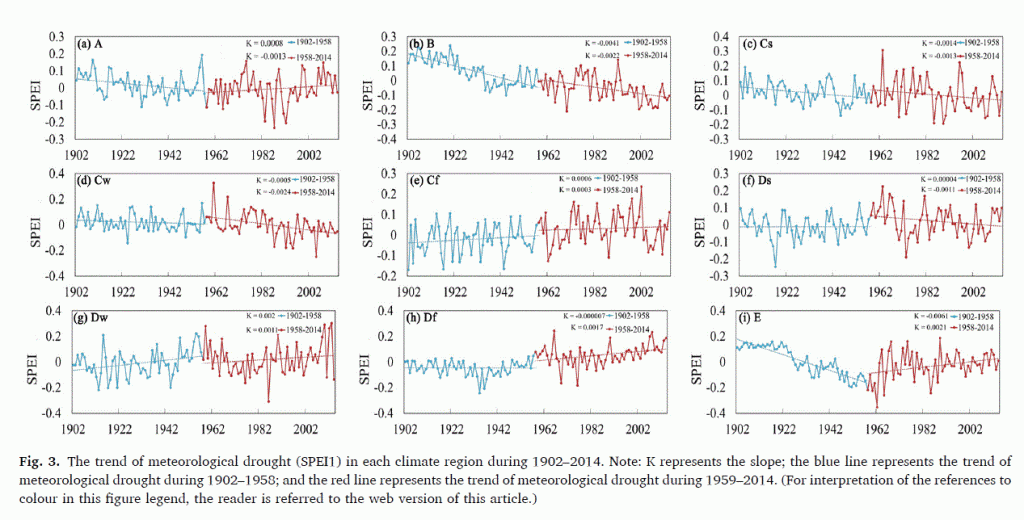





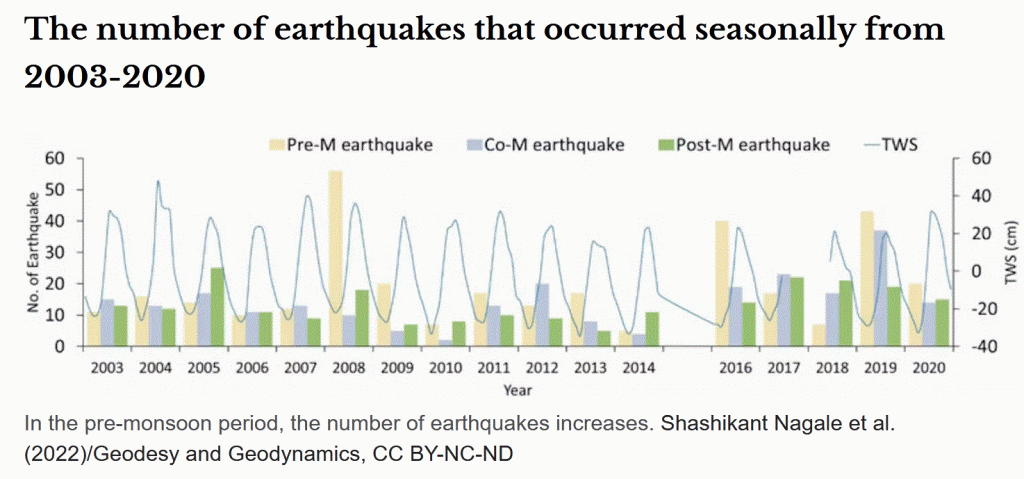
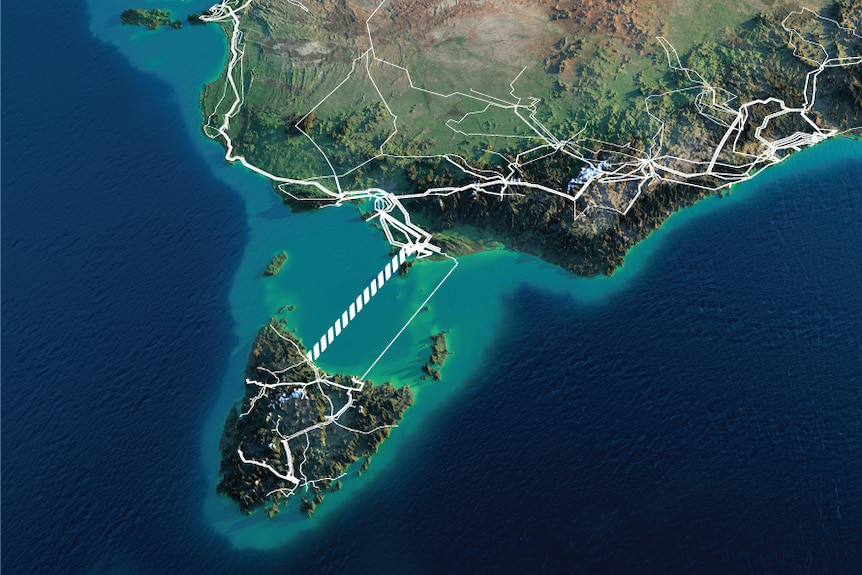

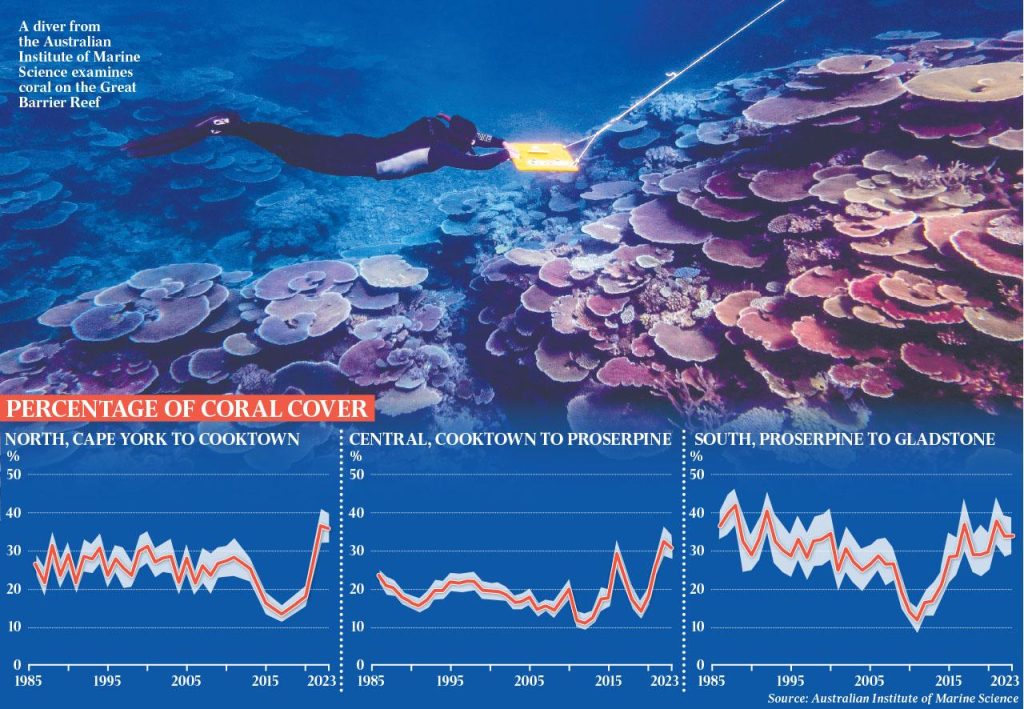


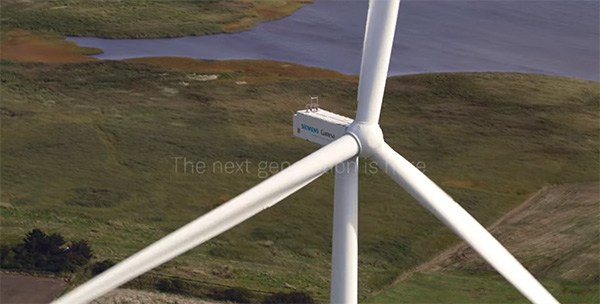
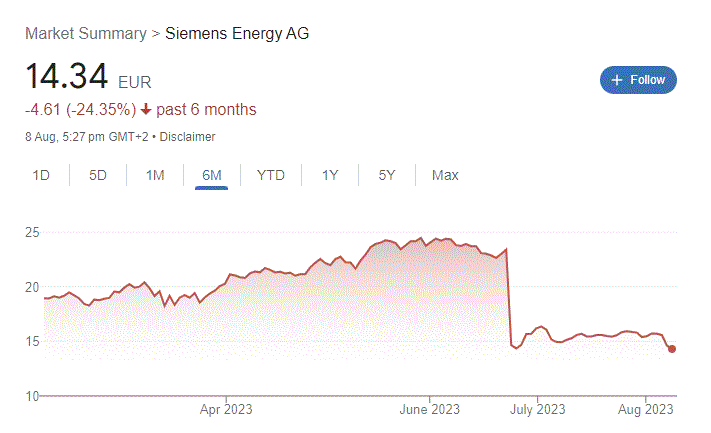
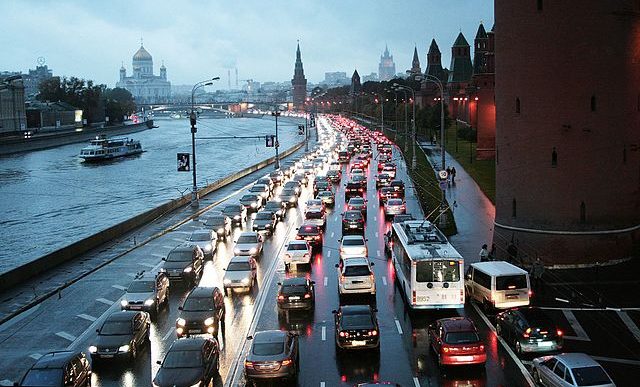







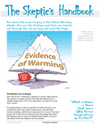

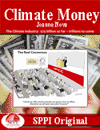




Recent Comments